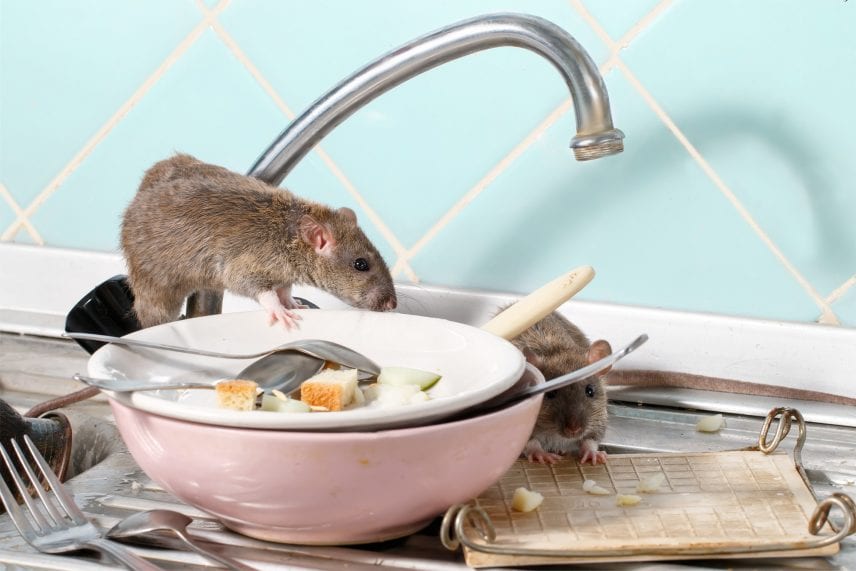Did you know that there are over 64 types of rats and millions can be present in just 1 city? While most of them are happy to live out in the wild, away from human contact, others like to move in as an unwanted roommate.
Two of the pesky rodents you should watch out for are the Norway rat and the roof rat. They’ll love to make a home within your home, all without paying rent.
But when it comes to Norway rat vs roof rat, how can you tell the difference? Keep reading to find out!
About the Norway Rat
As the name implies, the Norway rat (Rattus norvegicus) isn’t native to the United States. However, they’re not native to Norway either! These rats actually come from Asia but were identified by Norwegian scientists, hence their name.
The Norway rat is a large rodent. They can grow up to 19 inches long (including their tails), plus they can become quite plump and stocky. They’re usually brown in color with a gray or yellow-white underbelly.
All rodents like to nest, but these rats usually make their nests low on the ground in places like woodpiles and trash heaps. They’ll use any materials they can get their paws on, such as paper and fabric.
They’re quite adept at moving around, as they can both climb and burrow. If you find nests, then chances are, there are Norway rats nearby. They like to live close to easily accessible water and food sources.
Speaking of food sources, these rodents love to eat pretty much anything. For example, they’ll eat your meats, fruits, grains, and nuts. They’ll even get into pet food!
Like most other rodents, Norway rats are very prolific. Just 1 female rat can have up to 6 litters per year.
About the Roof Rat
Roof rats (Rattus rattus) aren’t native to the United States either. These rats came from Europe when they stowed away on sailing ships way back when. In fact, you might already know a little bit about the roof rat, as they were the ones who carried the Black Plague around Europe and caused millions of people to die.
Compared to the Norway rat, the roof rat is a bit smaller and sleeker; they grow up to 16 inches long. There are also 3 subspecies, which determine what color fur they have. The black rat has black fur and a gray underbelly, the Alexandrine rat has brown-gray fur and a gray underbelly, and the fruit rat has brown-gray fur and a white underbelly.
While Norway rats like to hug the ground, roof rats the opposite (as you might’ve guessed from their name). They prefer to build their nests off of the ground and spend a lot of their time in trees and other high-up places.
These rats are also omnivores, so they’ll eat anything they find in your home.
And like their cousins, roof rats quickly reproduce. 1 female rate can have up to 6 litters, and in each litter, she may have up to 8 babies.
Norway Rat vs Roof Rat
After learning about each rat, you’re probably now wondering what the similarities and differences between the two are. One obvious difference is how they look. The Norway rat is much bigger than the roof rat.
Another huge difference is where you’ll find them. Ground-hugging rodents are of the Norwegian species while up-high rodents are of other. Do note that if there are ample opportunities, roof rats might actually start burrowing in the ground.
Both the Norway rat and the roof rat carry many dangerous diseases, both directly and indirectly. So this means that even if you don’t have direct contact with pests in your home, both you and your family members can get sick from them.
Rodents are prey animals, which means both types of rats will be shy. Trying to lure and trap them on your own will take some patience, so don’t be surprised if they don’t take the bait right away. You’ll probably need the touch of an expert.
Lastly, they’re both fantastic at reproducing. Not only are they sexually mature at a very young age, but both can have up to 6 litters per year, per female.
You Need to Call a Professional
Regardless of which rat you have, you need to call a pest control professional if you think you have them in your house. Signs can be droppings, gnawed wood (such as on your furniture and walls), nibbled food packages, and grease marks along your floorboards.
These experts will be able to determine where exactly you have an infestation, identify entry points, and take the right actions to both eliminate current pests and prevent future ones from coming in.
It’s highly recommended that you call them sooner rather than later. Because these rats can reproduce quite quickly, your problem can get exponentially worse in a short amount of time. Don’t just hope they’ll move on from your property, because chances are, they won’t.
Get Rid of a Rat Infestation Today
Now that you know more about Norway rat vs roof rat, it’ll be easier to tell when you have a rat infestation.
But many of the signs of infestation are similar between the two. So if you suspect you have a rat problem, you should take prompt action, no matter which type is around. The sooner you get things under control, the less time, effort, and money it’ll take.
If you need rat pest control services, then get in touch with us now. We are a green company, which means the methods we use are safe for both your children and pets!


